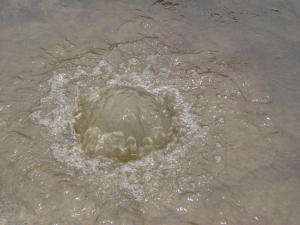Remember the Jakarta floods? They were three or four disasters ago. The other day our friend Ardi took me to see a school in notoriously flood-prone Kampung Melayu, one of the areas that got hit the hardest.
School is back in session, but they have to crowd large numbers of students into the few usable rooms.
The unusable ones are pretty messed up. The floodwaters were full of slime and garbage that got into every nook: every crack in the walls, every joint in the bookshelves, every chair and table that wasn’t swept away.
A whole section of the school needs a new roof. That’s how high the water got. In fact, at one point people were escaping the neighborhood by walking on the roof.
This is a horrible picture of me, but I wanted to show you Ardi’s mom (right) and, I believe, his aunt (left). They both live near the school. During the worst of the flooding, his aunt spent two days perched on the roof of her house. She looks a tad grim here, but in fact she’s a very smiley person.
“They dropped me food and water from a helicopter,” she said cheerfully, with the stoicism that gets tested all too often here.
It rained the night before my visit, and the neighborhood flooded again. The water had already receded by the time I got there, but his mom showed me the new waterline in her house, more than a foot high and still damp. “How many days has it flooded this year?” I asked. “Not days!” they laughed. “Two months!” Two months and counting, that is.

























